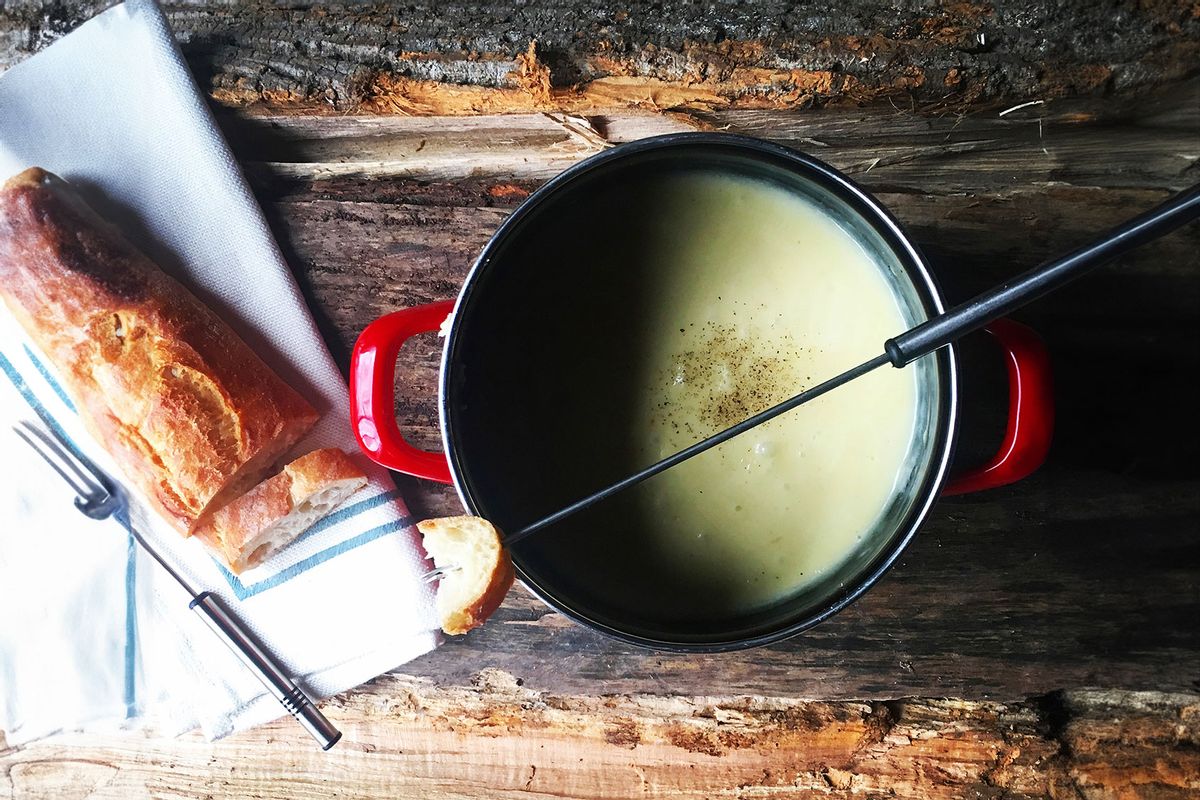Is America ready for a cheese fondue comeback?

Fondue has long been regarded a thing of the past. The famed Swiss comfort dish enjoyed its heyday in the United States amid the 1960s and 70s, when it would be enjoyed at home and in restaurants nationwide. With time, however, the dish dwindled in popularity, so much so that at one point, it seemed like people had entirely forgotten about the great pleasures of dipping fresh bread into melted, hot cheese (sincere apologies if you’re lactose intolerant).
Was there even a possibility for fondue to make a grand comeback?
Well actually, yes! In fact, fondue is currently enjoying its time under the spotlight.
Fondue first made its return in the United Kingdom in 2018. According to The Telegraph, research from Oxford University claimed there was a resurgence of a 1970s dinner-party fondue set piece at the time. Much of that fascination was tied to the fact that fondue is a dish meant to be shared and enjoyed for comfort. Fondue became a symbol of Swiss unity after it was popularized as a Swiss national dish by the Swiss Cheese Union in the 1930s. Widely revered as a cold weather meal, fondue was later promoted alongside slogans like “fondue creates a good mood” and “fondue is good and creates a good mood” in an effort to heighten Switzerland’s cheese consumption.
“Its origin is traced to isolated communities who had limited access to fresh food in the colder months so used old bits of cheese and bread, turning them into a rich, warming meal with the help of some local high-acidity white wine…,” wrote food writer Rosie Sykes in The Guardian.
A similar resurgence reached the United States only recently, thanks to a ruling made by a U.S. District Court in Virginia. Early last year, Judge T.S. Ellis ruled that gruyere cheese — which typically comes from certain regions of Switzerland and France, per the European Union (EU) — no longer has to come from those regions for it to be labeled as such. He argued that the term “gruyere” has become generic, meaning cheesemakers anywhere can make the cheese:
“It is clear from the record that the term ‘gruyere’ may have in the past referred exclusively to cheese from Switzerland and France. However, decades of importation, production, and sale of cheese labeled ‘gruyere’ produced outside the Gruyère region of Switzerland and France have eroded the meaning of that term and rendered it generic.”
Understandably, the decision caused quite an uproar amongst Swiss and French cheese makers. Gruyere, which is a key ingredient in fondue, is widely revered in Switzerland and has long been produced with special care. Legend has it that cow herders in Gruyères would feed their livestock grass from the tops of mountains because its sweet taste would yield better tasting milk for better tasting cheese. Cheese making has since been hailed as a sort-of art form amongst the Swiss.
As explained by Le Gruyère, the cows which produce milk for gruyere are “solely fed on natural forage — fresh grass in summer and hay in winter, with no additives or ensilage.” That milk is then delivered to cheese makers twice a day, both in the morning and evening. The “morning milk” is mixed with the “evening milk” and left to sit overnight before it’s curdled. After being pressed for 16 hours or more, the resulting cheese is left to sit in maturing cellars for anywhere between five to 18 months.
Making gruyere is no easy feat, which is why a group of French and Swiss cheese makers filed a lawsuit in an attempt to appeal the recent decision and protect their cheese making history, The Washington Post reported. Their efforts were ultimately unsuccessful after a Virginia-based U.S. Circuit Court of Appeals upheld the prior ruling in March.
Want more great food writing and recipes? Subscribe to Salon Food’s newsletter, The Bite.
Both the European Commission and the EU have remained committed to protecting their specialty foods, including produce, wines, spirits and, yes, cheeses. The EU even touts an elaborate classification system that stamps certain foods with seals that explain a specific product’s origin (like where it was grown or how it was made). Granted, Switzerland is not part of the EU. But its signature gruyère is still protected by the “AOP” or “Appellation d’Origine Protégée” (Protected Designation of Origin), explained the Tasting Table.
Despite its downsides, the ruling was celebrated as a major win for the U.S. Dairy Export Council. The council’s representative, Shawna Morris, told the Post that the group was “thrilled that the judge made a great call here, in our view.”
Outside of the courts, fondue has also made major strides in retail spaces and restaurants. This month, The Melting Pot launched two new fondue products to make eating fondue at home simpler: “Melting Pot saw the opportunity to meet consumers when and where they want, whether it’s dining in a restaurant or eating fondue at home,” said Bob Johnston, Chief Executive Officer of Front Burner Brands.
The Melting Pot also presented its all-new Ultimate 5-Course Experience, which promises a Chef-Crafted Cheese Fondue offering. The elaborate fondue spread includes a selection of six savory toppings, making it the perfect treat for those looking to enjoy more fondue in anticipation of the new year.
That’s all to say that the future of fondue looks really promising. As for whether America is ready for a cheese fondue comeback, the answer is undoubtedly yes.
Read more
about cheese:

